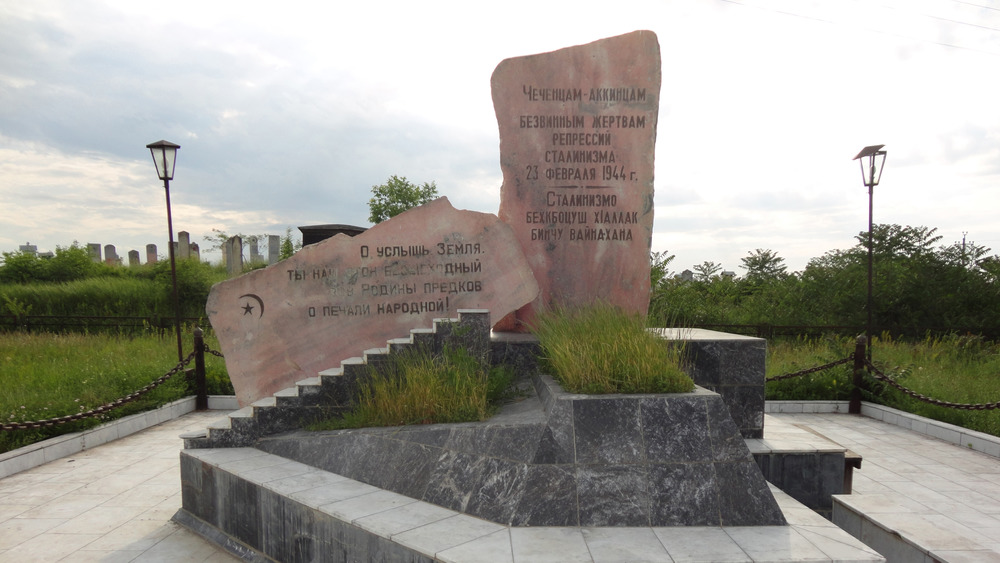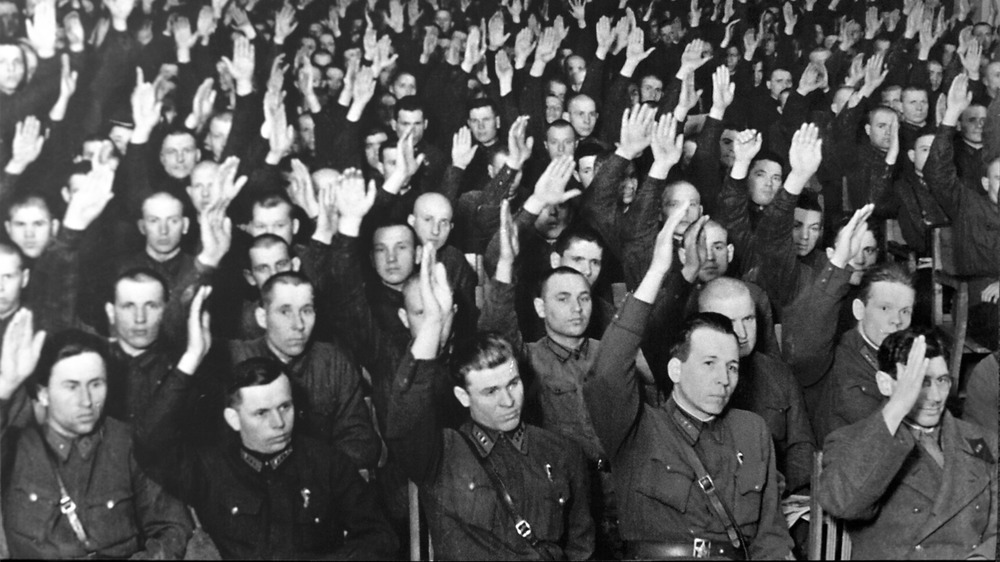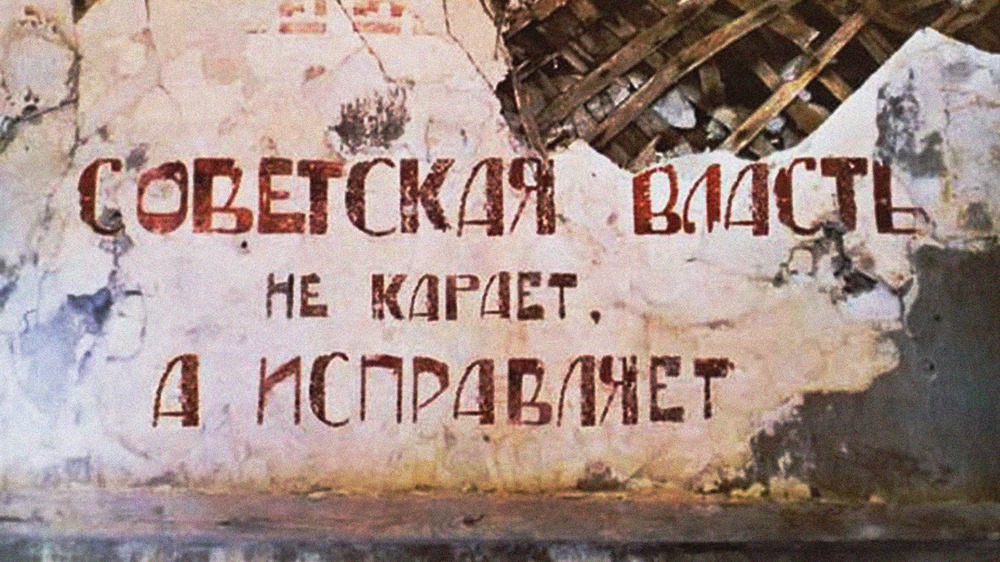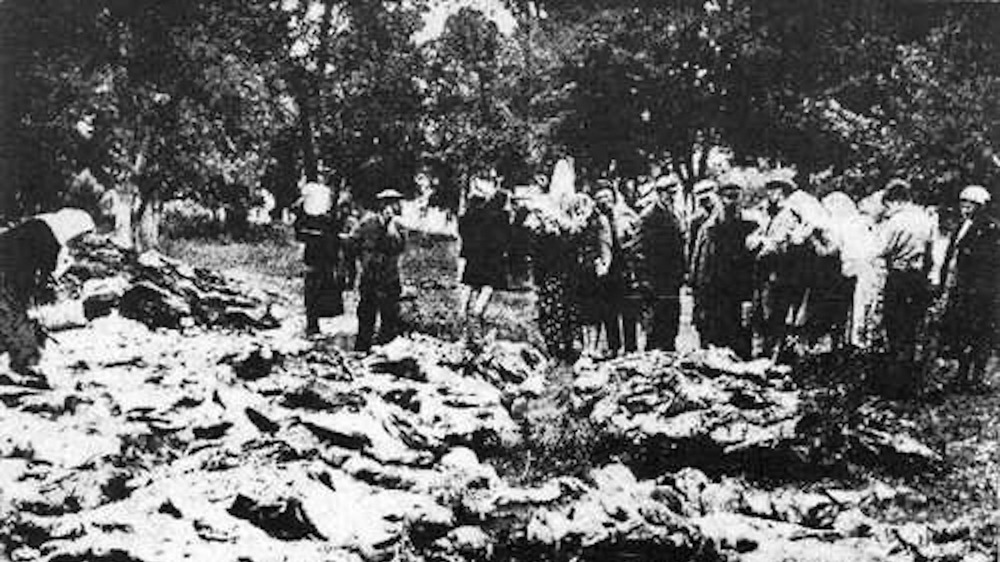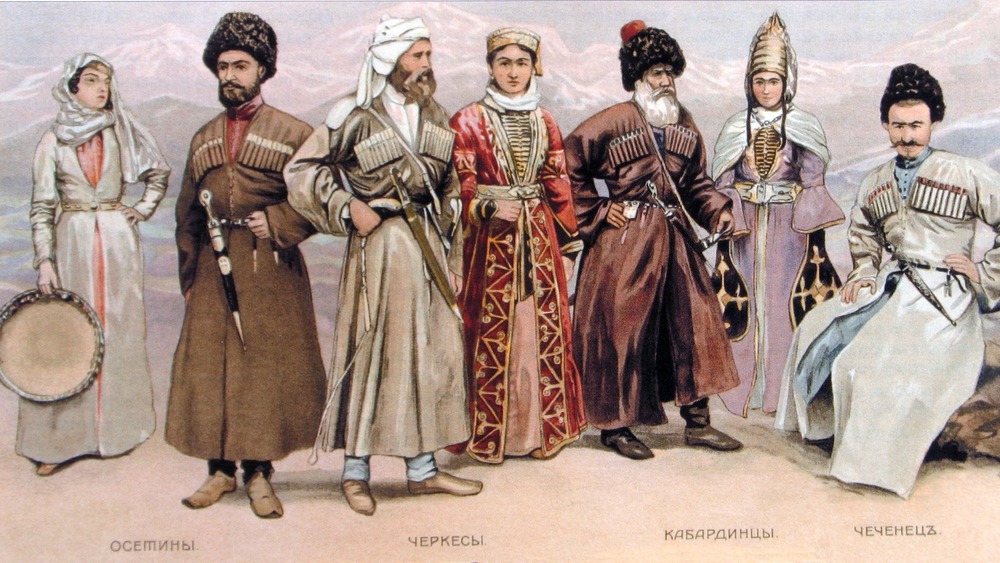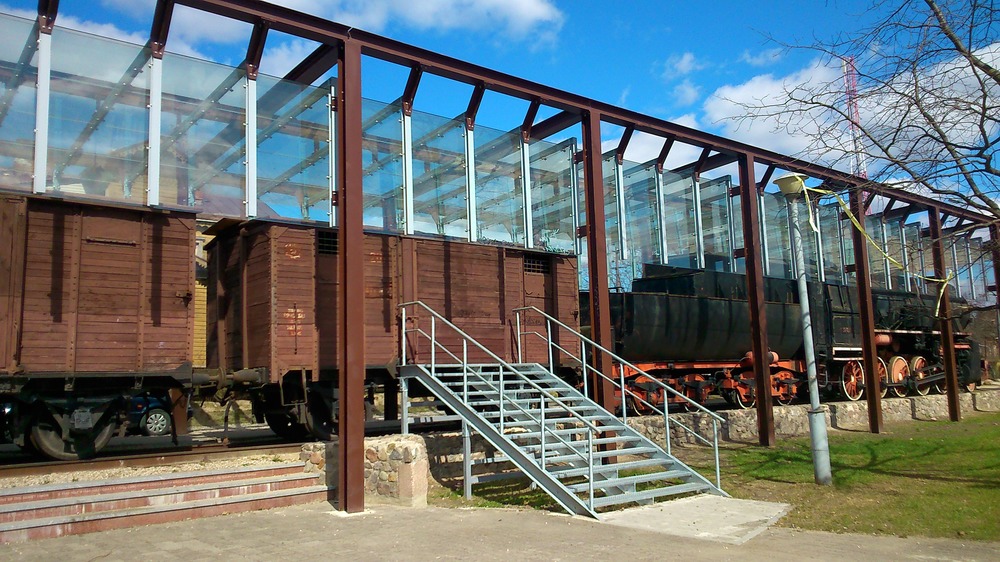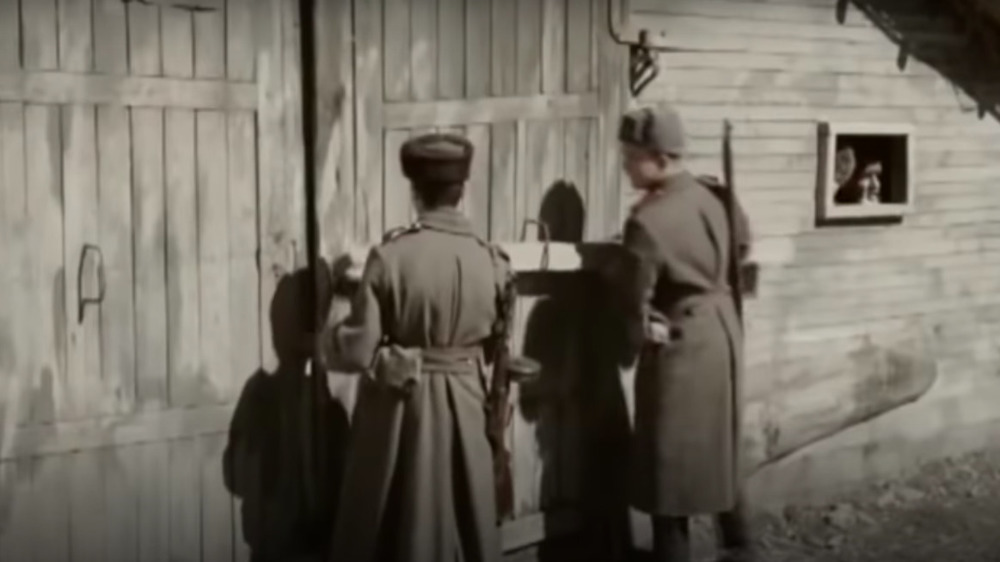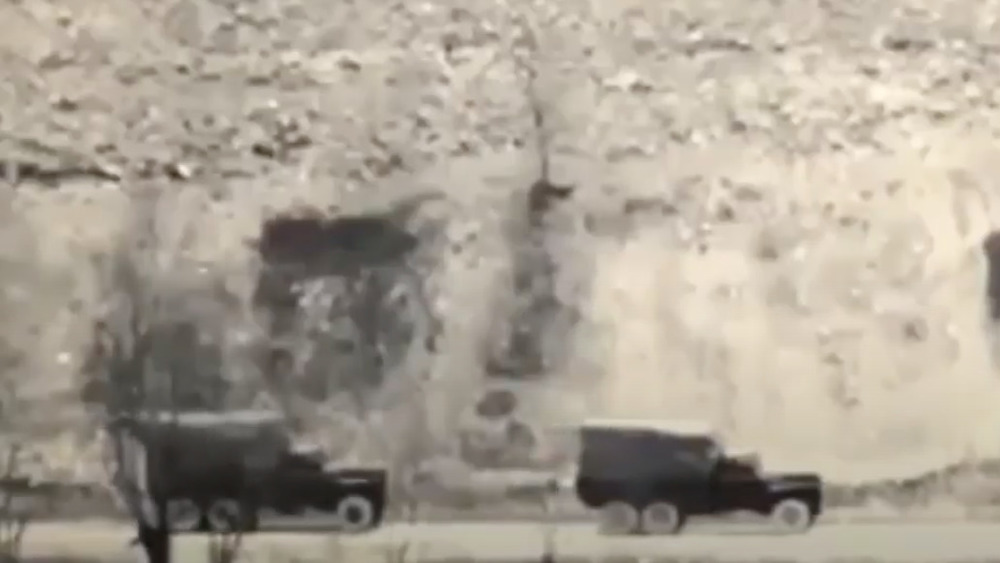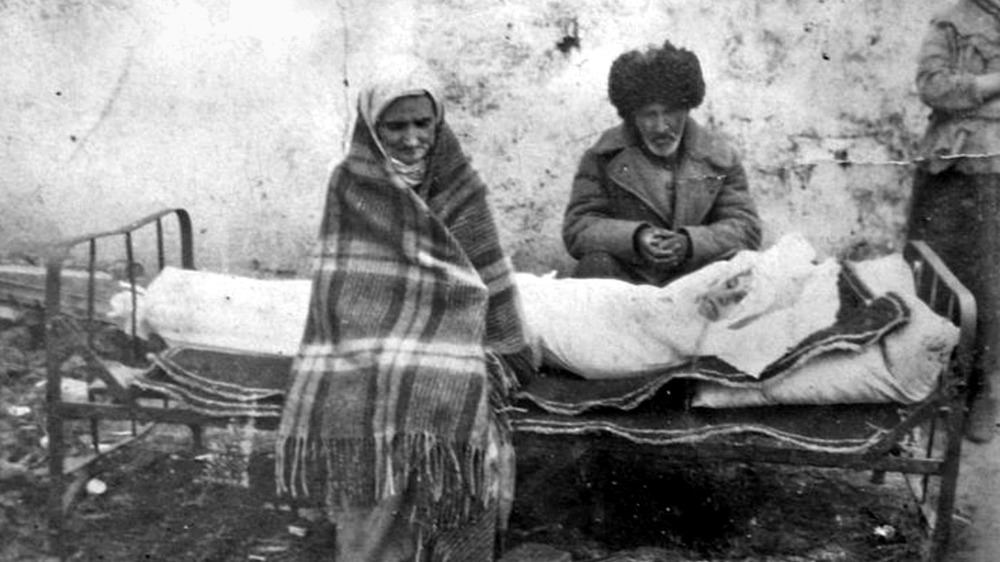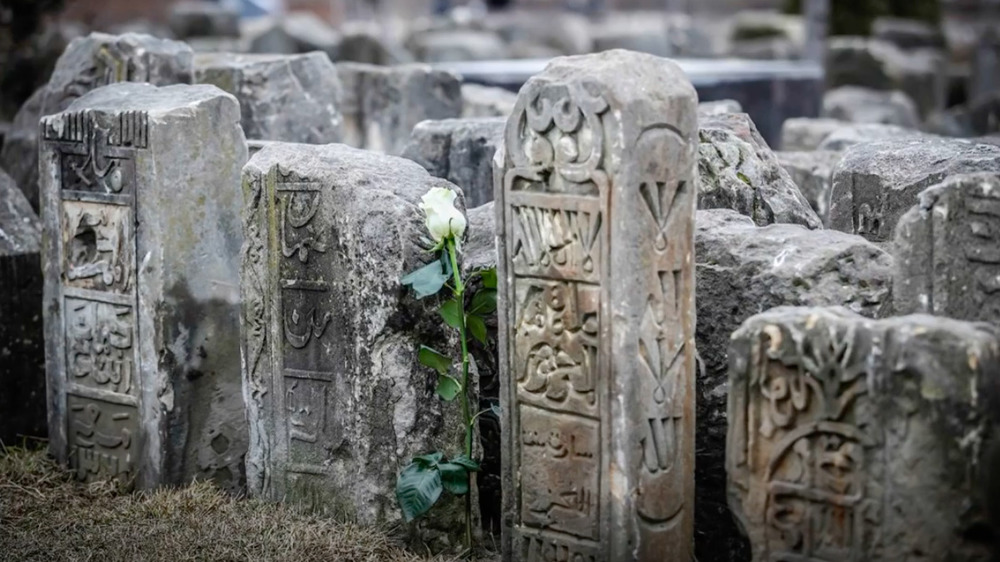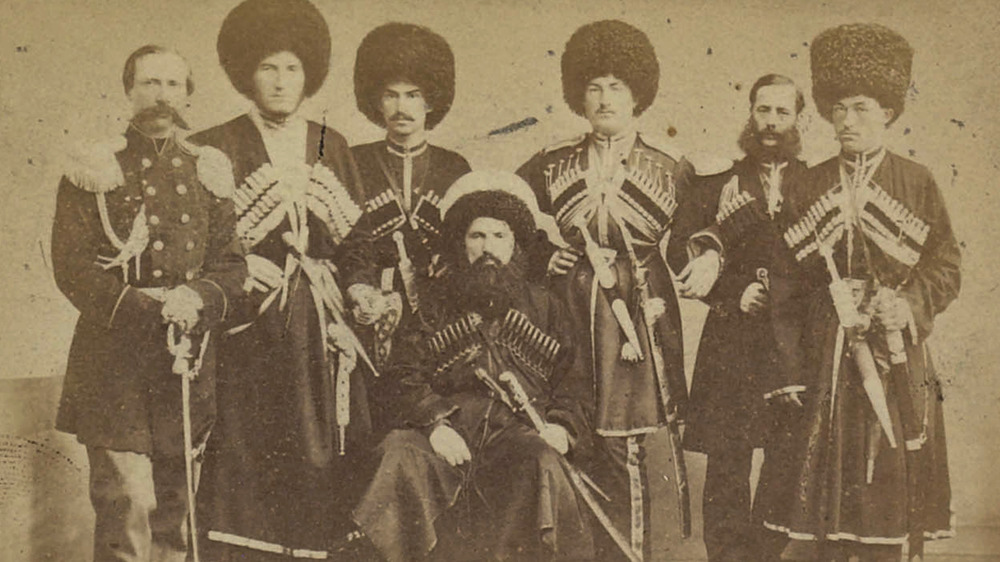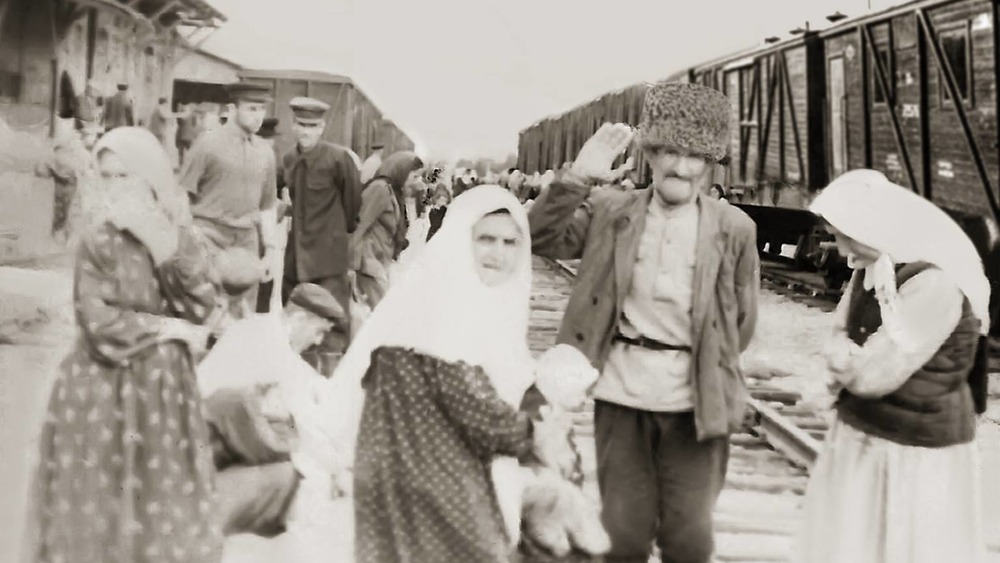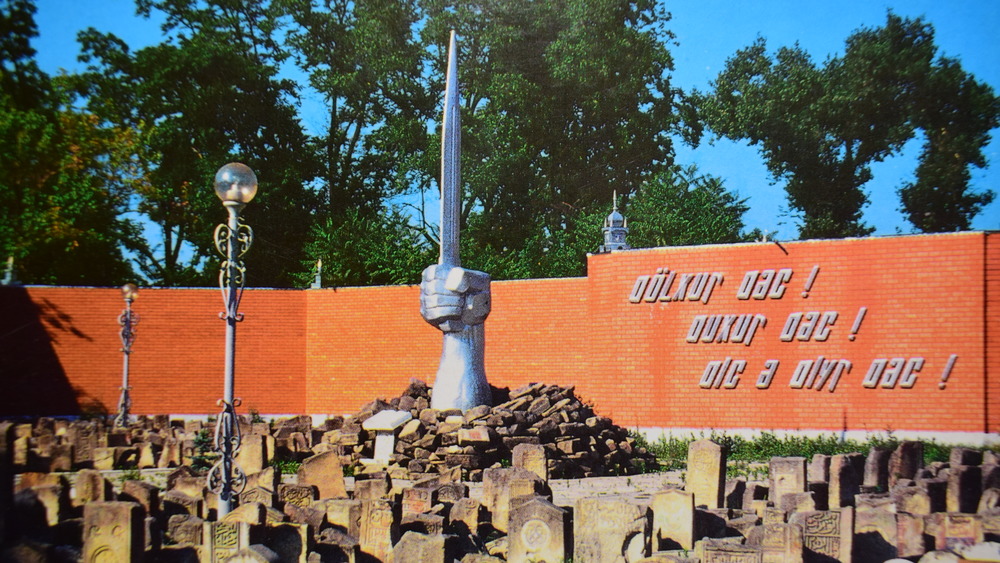The Tragic Truth About Stalin's Aardakh Deportations
Aardakh, or the genocide of the Chechen and the Ingush people, is one of the many forced deportations that the Soviet Union enacted against ethnic minorities and indigenous people. The majority of the deportations took just a few weeks as people were forced out of their homes in 1944.
Initially, when the soldiers came, people thought it was part of the Red Army celebrations that have occurred since 1919. The NKVD played into this and even invited the Chechen and Ingush men to join the celebration. But instead of festivities, they were met with guns and ordered into exile. Even those who fought against Hitler's army were eventually rounded up and forcibly exiled.
Thousands perished during the initial expulsion and journey while thousands more died during their years in exile. Those who tried to resist were sent to penal camps and it was forbidden to talk about the mass deportations. During this time, the Stalinist regime also engaged in cultural genocide as they sought to destroy any evidence of the Chechen and the Ingush people in the North Caucasus. The forced exile officially lasted 13 years, but as of 2021, some are still unable to return to their homeland. Here's the tragic truth about Stalin's Aardakh deportations.
Stalin's purges
In 1934, the murder of Sergei Kirov was used as an excuse by Joseph Stalin to unleash a campaign of repression across the Soviet Union known as the Great Purge, or the Great Terror. The Great Terror lasted until 1939, during which time the NKVD and the Stalinist regime murdered, imprisoned, and forcibly deported millions of people. And according to The Conversation, Stalin was motivated primarily out of the fear of a potential counter-revolution.
According to "Soviet Repression Statistics," it's difficult to know exactly how many suffered as a result of Stalinist repression during these years, but "the best estimate that can currently be made of the number of repression deaths in 1937–38 is the range 950,000–1.2 million, i.e. about a million." Some people were executed outright, while others perished in the Gulags.
This operation targeted former kulaks, generally defined as land-owning peasants who were liquidated as a class in the early 1930s, as well as government officials and members of the Red Army. According to Michigan State University, "the Great Terror was punctuated by three elaborately staged show trials of former high-ranking Communists." By 1937, the Great Terror had expanded to include "recidivist criminals, ex-kulaks, and other 'anti-Soviet elements.'" Quotas were even established for the number of arrests, and they ended up being exceeded.
Targeting ethnic minorities
The Stalinist regime particularly distrusted ethnic minorities. During the liquidation of the kulaks, Ukrainians were targeted and roughly 1/5th of all recorded death sentences occurred in Soviet Ukraine, "and this figure does not include natives of Soviet Ukraine shot in the Gulag," writes Timothy Snyder in Bloodlands.
Anyone with any connection to a foreign state, even if one were part of a diaspora that had resided within the Russian Empire for centuries, was considered to have "sufficient proof of their disloyalty and sufficient justification for their arrest and execution," according to SciencesPo. As a result, Estonians, Finns, Germans, Iranians, Koreans, Kurds, Latvians, and Poles were subjected to ethnic cleansing, though this is by no means an exhaustive list.
This wasn't the first time that Soviet authorities had targeted ethnic minorities. Throughout 1935 and 1936, there were numerous deportations launched at border regions. However, sometimes these operations weren't solely concerned with ethnicity. For example, in 1935, when some of the ethnic Russians who'd worked on the Chinese-Manchurian railway returned to the Soviet Union, "their cross-border ties to the Kharbintsy [railway workers] remaining in China turned them into the functional equivalent of a diaspora nationality," despite the fact that they were not in any sense part of a diaspora.
Accusing minorities of collaboration
By the end of the Second World War, the Stalinist regime resumed targeting its ethnic minorities, this time by claiming that they were engaging in collective treason. In 1943 and 1944, the Stalinist state began deporting "its entire Crimean Tatar, Kalmyk, Chechen, Ingush, Balkar, Karachai, and Messkhetian Turk populations to Central Asia." Many were accused of collaborating with fascists, despite the fact that the German frontline never even made it to Chechnya, according to The Jamestown Foundation. But although there were isolated attempts of people attempting to make contact with the Germans, due to their dissatisfaction under Soviet rule, there was little active collaboration. However, this myth was still perpetuated in order to justify all the forced deportations.
According to SciencesPo, the deportations of the 1940s differed from the previous deportations in that entire nationalities and ethnic groups were deemed "punished peoples," incapable of redeeming themselves: "Every single member of a 'punished' ethnic group was subjected to various discriminations, ranging from deportation to forced labor; all administrative structures were abolished in 'punished' regions and autonomous republics."
In "The Origins of Soviet Ethnic Cleansing", Terry Martin writes that the forced deportations of ethnic minorities continued from 1944 to 1953 as Armenians, Greeks, Bulgarians, and Khemshils were also deported: "In addition, it now appears that Stalin may indeed have been planning the deportation to Siberia of the entire Soviet Jewish population in the months prior to his death."
Who are the Chechen and the Ingush people?
The Chechens and the Ingush are considered part of the indigenous peoples of the North Caucasus known as the Vainakh peoples. They are "two distinct ethnic groups," although they do have ethnic and linguistic similarities. And although both cultures practice Islam, "their religious cultures vary." According to Minority Rights, under Soviet rule, the Ingush and the Chechen autonomous oblasts were merged into a single one in January 1934. Three years later, "the oblast became an ASSR [Autonomous Soviet Socialist Republic]," which slightly raised its status. However, during the forced resettlement, Chechen-Ingush ASSR was dismantled.
In The Vainakhs, George Anchabadze writes that the Chechens and the Ingush "experienced all the inhumanity of the Bolshevist regime. From the first years of Sovietization, officials of the Cheka (Special Committee) started to methodically exterminate the old intelligentsia and priesthood, and all others who seemed to be unreliable to the government."
During World War II, 40,000 Chechens and the Ingush fought against Hitler in the Soviet-German front alongside thousands of other Soviet soldiers. But despite everything, they were deemed treasonous along with every other Chechen and Ingush and after they finished fighting, the Stalinist regime organized their mass deportation as well.
Operation Lentil
On February 20rd, 1944, Lavrentiy Beria, head of the NKVD, led "120,000 special forces" to Grozny to prepare for the forced resettlement, known as Чечевица (Chechevitsa), or Operation Lentil. Three days later, according to SciencesPo, "Chechen and Ingush men from each village were invited to take part in the Red Army Day celebrations." But when they got there, they found themselves surrounded by soldiers who read them a decree ordering their expulsion. They were given less than an hour to gather what they needed, each family was allowed roughly 45 pounds of baggage, and then forcibly removed to railway stations to be taken to exile.
The forced removal of the Chechens and the Ingush lasted into March. Within a week, almost 500,000 people had been expelled. Radio Free Europe reports that some woke up to Soviet troops "knocking at their door in the middle of the night and order[ing] them to pack their bags." Some were taken to Kazakhstan or other Central Asian Republics while others were sent east to Siberia "in cattle trucks or freight cars."
No one was left behind, and anyone who couldn't be moved was murdered. Those who tried to hide were either killed as well or arrested and exiled once they were caught. This operation also wasn't limited to those living in the Caucasus: "Chechens living in other regions were also required to relocate."
The Khaybakh Massacre
On February 27th, 1944, NKVD soldiers found it difficult to move the villagers of Khaibakh, in Chechnya's Galanchozh District, partly due to the fact that many of them were elderly. Their solution was to move the 700 villagers, "including elderly, women, and children," into a barn and to burn them alive. In "The Gardening States," Duco Heijs writes that soldiers shot at those who tried to escape.
Known as the Khaybakh Massacre, also spelled Khaibakh, afterwards the Stalinist forces also didn't clean up the bodies after the massacre. Those who lived nearby ended up collecting and burying the bodies: "It took us two or three days to bury the bodies. We dug three of four ditches. Everything was in parts. There were no complete bodies." And according to the Historical Dictionary of the Chechen Conflict, "Lavrentiy Beria [later] promoted Colonel Gveshiani, the NKVD officer responsible for the Khaibakh massacre." But at an official level, reports of the massacre were "silenced."
According to Remembrance and Forgiveness, a Chechen film was banned in 2014 because it depicted the massacre and the 1944 deportations: "The argument for the ban was that the film could fuel inter-ethnic tensions, and the Russian Ministry of Culture argued that there was no proof of the mass murder."
Exiled to Far East Siberia and Central Asia
Most of the Chechens and Ingush were put into freight cars or cattle trucks for the journey. SciencesPo writes that some people traveled in the regular train carriages because, "under NKVD pressure," they assisted with the deportation: "These representatives pleaded that the population obey the NKVD." Most were taken to Kazakhstan and Kyrgyzstan, while others were taken further to Far East Siberia in a journey that lasted 20-30 days. And those who were fighting the Germans on the front were "demobilized and sent off to labor camps before finally joining their fellow deportees in exile" by the end of 1944.
OC Media reports that "the expulsion of people from highland areas involved extreme cruelty. Inhabitants from the many villages with no roads leading to them were forced to march through the snow. The old and the sick were shot on the spot or bayoneted. People who rushed to help them were instantly killed by machine gun fire."
Once the Chechens and the Ingush were all forcibly deported, Ukrainians, Russians, and other inhabitants of the North Caucasus moved into the empty houses. According to Human Rights Watch, this was done in order "to make the restoration of the Chechen-Ingush ASSR impossible in the future." Ingush land was also ceded to North Ossetia. Meanwhile, the Stalinist regime destroyed any cultural evidence of the Chechens and the Ingush. Gravestones were destroyed, ancient manuscripts were burned, and "centuries-old towers [were] razed," according to Radio Free Europe.
Thirteen years of exile
For the next 13 years, the Chechens and the Ingush were forced to stay in their exiled villages. Although they weren't physically enclosed by barbed wire, their movements were still monitored. SciencesPo reports that they weren't allowed to go more than three miles away from the camp "and each month or even every 15 days, they had to register with the local NKVD office (spetskomandatur)."
The BBC writes that some Ingush were made to live with local families who were none too pleased with the situation and often refused to communicate with the Ingush people living with them. Apparently, the locals had been told to expect "cannibals," or according to Irish Times, "renegades." The NKVD also forced the Chechens and the Ingush to work in factories where they received minimal pay for their physical labor. Meanwhile, the children were sent to Russian primary schools and "were also forbidden to use their own language." And whenever officers asked a Chechen or an Ingush person what they were, they'd had to respond "an enemy of the people" or they'd be beaten.
Some refused to comply with the restrictions of their exile, and at least 4,000 ended up "being sent to penal camps in Krasnoyarsk alone," according to Human Rights Watch.
What was the death toll?
It's incredibly difficult to know how many people died during the forced deportation and subsequent exile. OC Media estimates that "one third of the deportees died during the journey or in the first years of life in exile." Human Rights Watch reports that approximately 24.7 percent of Caucasian deportees (including Karachays, Balkars, Chechens, and Ingush) died during the first five years.
According to SciencesPo, based on NKVD reports it's estimated that between 14.6 percent and 23.7 percent of people who were forcibly deported died during the first three years: "These rough figures, however, do not take into account those who died during the initial expulsion and journey." Radio Free Europe reports that during the first few months, tens of thousands died from famine.
During the first few years, thousands perished from "disease, malnutrition (and even famine), lack of elementary supplies (like clothing or shoes) and absence of medical care." But since Chechens and Ingush were "excluded from all population censuses" during their years of exile, the only figures that deflect their demographic situation comes from the NKVD who were administering the camps. As a result, the estimate of 125,000 is likely on the low side. NKVD reports also estimate that 30 percent of people died between 1944 to 1952. Chechen historians put the death rate closer to 50 percent, though this estimate is "based on impressions and testimonies" rather than a census or study.
Rewriting history
After the deportations, Soviet history was rewritten. SciencesPo writes that Chechens were portrayed as "traitors," "bloodthirsty bandits and noteworthy insubordinates." And since Chechens and Ingush had historically resisted Russia's colonial rule, it wasn't difficult for the Stalinist regime to play on pre-existing stereotypes and propaganda: "The Russian collective imaginary already portrayed the Chechens as rebels and savages. Soviet propagandists, relying on this earlier representation, renewed old common fears and generated new antagonisms."
Historical figures were also rewritten. According to "A Revolt of Social Memory," Imam Shamil, who'd been treated "as a symbol of a stubborn struggle against the tsarist regime" during the 1920s and 1930s, was suddenly re-interpreted "as a traitor and Anglo-Turkish spy, and his name was banned."
Chechen-Ingush ASSR local authorities also played "an indirect role" before and during the deportations. During the 1930s, they exaggerated "the nature of the Chechens resistance to Sovietization and collectivization" and fed into the stigmatization of the Chechens and the Ingush. And the local authorities were also the ones who praised the Chechens for fighting the Germans and then accused them of collaboration in the same breath.
Returning from exile
In 1957, Premier Nikita Khrushchev issued a decree that began to allow deportees to return to their homelands. However, it wasn't until a decree in 1989 that all forcibly exiled people were allowed to return. This decree "paved the way for eventual compensations to be paid to the survivors. Yet, first of all it was a very symbolic act which included almost no concrete measures. Moreover, it did not erase years of stigmatization or the collective traumas, which changed the perception Chechens had of themselves," according to SciencesPo.
Upon their return, OC Media reports that since all of their homes had been occupied, "many Chechens had to buy back their homes for large sums of money." Many of the Russian-speaking occupiers also protested against the return of the indigenous people and there were multiple riots in Grozny. Prejudice against the Chechens and the Ingush also remained: "Suspicion and distrust continued. Chechens, like many other deported peoples, were still viewed as traitors and non-trustworthy beings."
In 1991, Yeltsin's government passed the Law on the Rehabilitation of the Repressed Peoples. But according to the International Crisis Group, "the law provided that rehabilitation should not infringe on the rights on current residents and stipulated no mechanisms to ensure smooth territorial transfer." As a result, "confrontation between the communities involved spiraled." And as of 2021, Chechens and Ingush are still unable to return to their homes and villages in the Aukh District in Dagestan.
Legacy of the deportations
At the time of the deportations and afterwards, there was a great deal of censorship that repressed testimonies from witnesses and people were prohibited from talking about the "massive deportations." According to SciencesPo, "this silence directly affected the deportees. Chechens, like the other 'punished' peoples, had neither the right to speak overtly about their forced resettlement, nor even write testimonies concerning their traumatic experience."
UNPO writes that in 2004, the European Parliament officially recognized Aardakh, the genocide of the Chechen people. And while the 1991 law acknowledged that "Soviet acts towards certain nations [were] 'policies of defamation and genocide'" and were crimes, the Russian government has maintained their colonizing attitude towards the indigenous people of the North Caucasus. OC Media also writes that despite the numerous testimonies regarding the Khaybakh Massacre, the Russian government refuses to acknowledge that it occurred.
After the fall of the Soviet Union, the separatist movement in Chechnya began fighting for self-determination, which the Russian Federation suppressed over the course of two wars, writes DW. In 2000, after Vladimir Putin came into power, he declared Chechnya to be under Russian rule, three years later, Chechnya was officially absorbed into the Russian Federation with "a puppet government" installed by Putin. As of 2021, Chechnya remains the site of frequent human rights abuses, and its leadership "continu[es] its onslaught on all forms of dissent and criticism."
